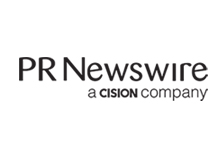Worldwide Motion Sensor Market Research Report: By Technology, Type, Application - Competitive Share Analysis and Growth Forecast to 2030 - ResearchAndMarkets.com
The "Motion Sensor Market Research Report: By Technology, Type, Application - Competitive Share Analysis and Growth Forecast to 2030" report has been added to ResearchAndMarkets.com's offering.
The major reasons behind the prosperity of the motion sensor market are the increasing demand for consumer electronics and the expansion in the worldwide automotive industry. From $4,430.7 million in 2019, the market revenue is expected to grow at a CAGR of 5.1% during 2020-2030 (forecast period). At this rate, the sales of these devices are projected to be worth $7,590.8 million by 2030. Such devices are used to see the distance traveled by a physical body in a defined area.
On the basis of technology, the motion sensor market is bifurcated into passive and active, of which the passive bifurcation dominated it in 2019, and it would also experience the higher CAGR during the forecast period. This is credited to the rising adoption of microelectromechanical system (MEMS) and infrared (IR) motion sensors that work on the passive technology. Such devices are widely utilized in medical devices, consumer electronics, and industrial machines.
To cater to the rising requirement for such devices, the production of motion sensors has to be raised significantly. Therefore, in order to save costs, manufacturers are turning to the MEMS technology to produce these devices, as it is based on the process of microfabrication. Apart from cost benefits, MEMSs also offer enhanced reliability and performance figures, which is why this technology is becoming a motion sensor market trend. As MEMSs are based on silicon wafers, a single batch of semiconductors can produce thousands of motion sensors.
The increasing demand for consumer electronics is one of the most important drivers for the market. Motion sensors have numerous uses in electronics, such as detecting the heartbeat in smart wearables and controlling a smartphone's screen orientation. A high interest in consumer electronics, including smartphones, smart wearables, and augmented reality (AR)/virtual reality (VR) devices, is being displayed by the millennials and the young, owing to the rising disposable income and standard of living and easy access to financing. With population boom, the sale of consumer electronics would surge further.
Companies Mentioned
- NXP Semiconductors N.V.
- Robert Bosch GmbH
- Schneider Electric SE
- Honeywell International Inc.
- Koninklijke Philips N.V.
- Panasonic Corporation
- Eaton Corporation plc
- Analog Devices Inc.
- STMicroelectronics N.V.
- Murata Manufacturing Co. Ltd.
-
TE Connectivity Ltd.
Key Topics Covered:
Chapter 1. Research Background
Chapter 2. Research Methodology
Chapter 3. Executive Summary
Chapter 4. Introduction
4.1 Definition of Market Segments
4.1.1 By Technology
4.1.1.1 Active
4.1.1.2 Passive
4.1.2 By Type
4.1.2.1 IR
4.1.2.2 Ultrasonic
4.1.2.3 Tomographic sensor
4.1.2.4 Accelerometer
4.1.2.5 Gyroscope
4.1.2.6 Combo sensor
4.1.2.7 Others
4.1.3 By Application
4.1.3.1 Consumer Electronics
4.1.3.2 Automobile
4.1.3.3 Medical device
4.1.3.4 Building automation
4.1.3.5 Industrial equipment
4.1.3.6 Others
4.2 Value Chain Analysis
4.3 Market Dynamics
4.3.1 Trends
4.3.1.1 Leveraging MEMS technology for manufacturing of motion sensors
4.3.2 Drivers
4.3.2.1 Growing automotive industry
4.3.2.2 Rising demand for consumer electronics
4.3.2.3 Impact analysis of drivers on market forecast
4.3.3 Restraints
4.3.3.1 Low return on investment
4.3.3.2 Impact analysis of restraints on market forecast
4.3.4 Opportunities
4.3.4.1 Commercialization of internet of things (IoT)
4.4 Porter's Five Forces Analysis
Chapter 5. Global Market Size and Forecast
5.1 By Technology
5.2 By Type
5.3 By Application
5.4 By Region
Chapter 6. North America Market Size and Forecast
6.1 By Technology
6.2 By Type
6.3 By Application
6.4 By Country
Chapter 7. Europe Market Size and Forecast
7.1 By Technology
7.2 By Type
7.3 By Application
7.4 By Country
Chapter 8. APAC Market Size and Forecast
8.1 By Technology
8.2 By Type
8.3 By Application
8.4 By Country
Chapter 9. LATAM Market Size and Forecast
9.1 By Technology
9.2 By Type
9.3 By Application
9.4 By Country
Chapter 10. MEA Market Size and Forecast
10.1 By Technology
10.2 By Type
10.3 By Application
10.4 By Country
Chapter 11. Competitive Landscape
11.1 List of Market Players and Their Offerings
11.2 Competitive Analysis of Key Players
11.3 Competitive Benchmarking of Key Players
Chapter 12. Company Profiles
Chapter 13. Appendix
For more information about this report visit https://www.researchandmarkets.com/r/wsky4d
View source version on businesswire.com: https://www.businesswire.com/news/home/20200408005427/en/




